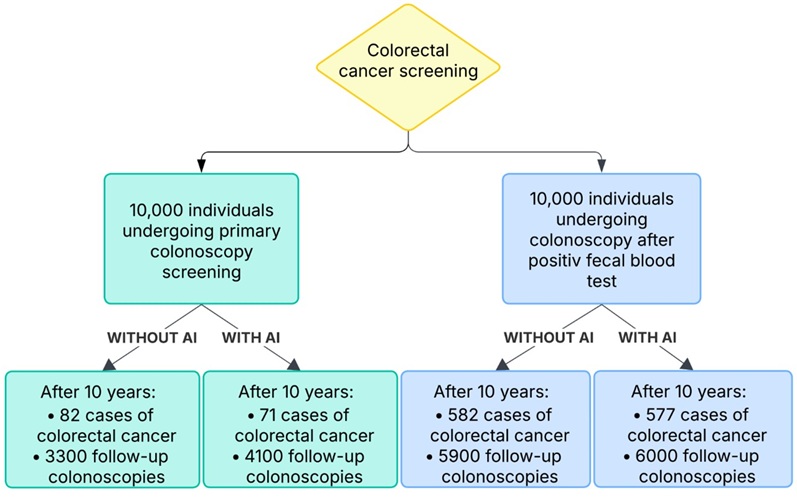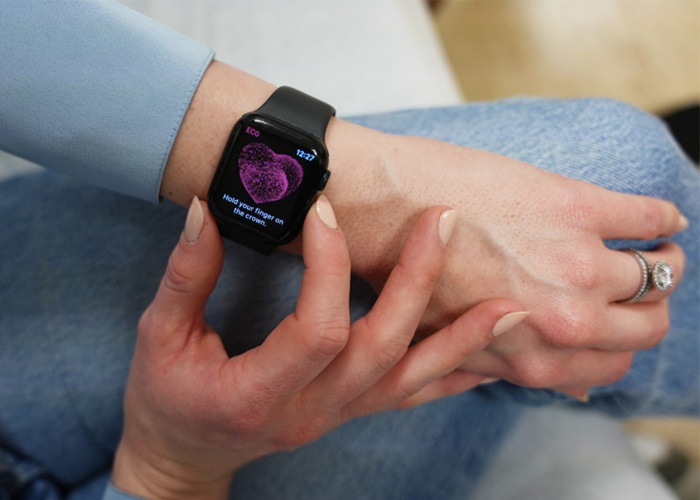Novel Method Combining Heart Biopsy and Device Implantation Reduces Complications Risk
|
By HospiMedica International staff writers Posted on 21 Feb 2025 |

Endomyocardial biopsy (EMB) is a crucial diagnostic tool for identifying various cardiac conditions; however, it carries a risk of complications due to its invasive nature. New research has introduced a method that combines right ventricular (RV) septal EMB with the implantation of cardiac implantable electronic devices (CIEDs) such as pacemakers or defibrillators, utilizing the same sheath for both procedures. This innovative approach, detailed in two studies published in the journal Heart Rhythm, highlights the feasibility and safety of the technique.
EMB is associated with a complication risk of up to 3%. It is typically performed only when noninvasive diagnostic methods fail to provide definitive results or the necessary histology, which can result in delays. The newly developed combined procedure significantly reduces the risk of complications and allows for earlier diagnosis of heart conditions such as cardiomyopathy and heart failure. Early detection enables timely treatment, which can improve patient outcomes. Furthermore, it can help identify genetic factors that may affect other family members. The studies published in Heart Rhythm discuss the researchers’ experience in combining RV septal EMB with CIED implantation, taking advantage of 3D curved conduction system pacing (CSP) sheaths. These CSP sheaths allowed for precise RV septal placement, making the biopsy procedure a quick and safe addition to the CIED implantation process.
"Our study ‘Novel technique and assessment of available 3-dimensional delivery sheath for endomyocardial biopsy during cardiac device implantation’ demonstrated the usefulness and safety of the new method for performing EMB in 20 patients using a 3-dimensional delivery sheath during CIED implantation,” said Kenji Kuroki, MD, Department of Cardiovascular Medicine, University of Yamanashi (Chuo, Japan). “Additionally, it enabled the early diagnosis of previously undetected cardiac amyloidosis (CA) in 4 patients (20%), as confirmed by pathologic findings. Subclinical CA may often be overlooked among patients with CIED implantation. Early diagnosis could enable the timely initiation of appropriate treatment, making this finding particularly important."
Patients requiring CIEDs often experience complications such as cardiomyopathy or other cardiac issues, which may necessitate EMB. Traditionally, EMB using a bioptome—a tool for extracting tissue from the heart—has been avoided in these patients to minimize the risk of lead displacement during the peri-procedural period, in accordance with EMB guidelines. The study titled "Feasibility and safety of endomyocardial biopsy by lumenless pacing lead sheath–directed method during cardiac implantable electronic device implantation" enrolled 80 patients who were referred for EMB. This study evaluated the safety and practicality of performing transvenous RV EMB using the lead sheath method (L-S-M) during CIED implantation and compared it to the traditional bioptome method (T-B-M).
"Using cardiac pacing leads instead of traditional myocardial biopsy forceps during the implantation could be timesaving and cost-effective without compromising safety,” said Yang Ye, lead investigator at Zhejiang University (Hangzhou, China). “In addition, it has the advantages of requiring only one vessel for both EMB and CIED implantation. In this study, no ventricular perforations or serious cardiac event occurred, demonstrating a safe L-S-M procedure of EMB."
Latest Surgical Techniques News
- Tiny Robotic Tools Powered by Magnetic Fields to Enable Minimally Invasive Brain Surgery
- Magnetic Tweezers Make Robotic Surgery Safer and More Precise
- AI-Powered Surgical Planning Tool Improves Pre-Op Planning
- Novel Sensing System Restores Missing Sense of Touch in Minimally Invasive Surgery
- Headset-Based AR Navigation System Improves EVD Placement
- Higher Electrode Density Improves Epilepsy Surgery by Pinpointing Where Seizures Begin
- Open-Source Tool Optimizes Placement of Visual Brain Implants
- Easy-To-Apply Gel Could Prevent Formation of Post-Surgical Abdominal Adhesions
- Groundbreaking Leadless Pacemaker to Prevent Invasive Surgeries for Children
- Spectroscopy Technique Improves Surgery for Pediatric Epilepsy Patients
- Bioengineered Arteries Show Promise for Cardiovascular Surgery
- Online Tool Guides Surgical Decisions for Gallbladder Cancer
- Innovative Technology Enables Rapid Life-Saving Surgical Leak Detection
- First-Of-Its-Kind Bioresorbable Implant to Help Children with Rare Respiratory Disease
- Screw-Shaped Magnetic Microrobots to Transform Treatment for Patients with Inoperable Blood Clots
- "Ultra-Rapid" Testing in the OR Could Enable Accurate Removal of Brain Tumors
Channels
Artificial Intelligence
view channel
Innovative Risk Score Predicts Heart Attack or Stroke in Kidney Transplant Candidates
Heart researchers have utilized an innovative risk assessment score to accurately predict whether patients being evaluated for kidney transplants are at risk for future major cardiac events, such as a... Read more
AI Algorithm Detects Early-Stage Metabolic-Associated Steatotic Liver Disease Using EHRs
Liver disease, which is treatable when detected early, often goes unnoticed until it reaches advanced stages. Metabolic-associated steatotic liver disease (MASLD), the most prevalent form of liver disease,... Read moreCritical Care
view channel
First-Of-Its-Kind AI-Powered Probability Scoring System Assesses Heart Failure with Preserved Ejection Fraction
Heart failure with preserved ejection fraction (HFpEF) is one of the most difficult types of heart failure to diagnose due to the intricate interaction between various clinical and echocardiographic factors.... Read more
AI-Assisted Colonoscopy Detects More Polyps but Has Modest Effect on Cancer Risk
Colorectal cancer is among the most common cancers in the Western world. Currently, screening is performed using a test that detects blood in the stool (FIT screening). If the test identifies a certain... Read more
Wearables Could Reduce Need for Continuous Blood Thinners in Patients with Atrial Fibrillation
Atrial fibrillation (AFib) is the most prevalent heart arrhythmia, affecting over 5 million individuals in the United States, with projections suggesting that number could rise to 12.1 million by 2030.... Read morePatient Care
view channel
Portable Biosensor Platform to Reduce Hospital-Acquired Infections
Approximately 4 million patients in the European Union acquire healthcare-associated infections (HAIs) or nosocomial infections each year, with around 37,000 deaths directly resulting from these infections,... Read moreFirst-Of-Its-Kind Portable Germicidal Light Technology Disinfects High-Touch Clinical Surfaces in Seconds
Reducing healthcare-acquired infections (HAIs) remains a pressing issue within global healthcare systems. In the United States alone, 1.7 million patients contract HAIs annually, leading to approximately... Read more
Surgical Capacity Optimization Solution Helps Hospitals Boost OR Utilization
An innovative solution has the capability to transform surgical capacity utilization by targeting the root cause of surgical block time inefficiencies. Fujitsu Limited’s (Tokyo, Japan) Surgical Capacity... Read more
Game-Changing Innovation in Surgical Instrument Sterilization Significantly Improves OR Throughput
A groundbreaking innovation enables hospitals to significantly improve instrument processing time and throughput in operating rooms (ORs) and sterile processing departments. Turbett Surgical, Inc.... Read moreHealth IT
view channel
Printable Molecule-Selective Nanoparticles Enable Mass Production of Wearable Biosensors
The future of medicine is likely to focus on the personalization of healthcare—understanding exactly what an individual requires and delivering the appropriate combination of nutrients, metabolites, and... Read more
Smartwatches Could Detect Congestive Heart Failure
Diagnosing congestive heart failure (CHF) typically requires expensive and time-consuming imaging techniques like echocardiography, also known as cardiac ultrasound. Previously, detecting CHF by analyzing... Read morePoint of Care
view channel
Handheld, Sound-Based Diagnostic System Delivers Bedside Blood Test Results in An Hour
Patients who go to a doctor for a blood test often have to contend with a needle and syringe, followed by a long wait—sometimes hours or even days—for lab results. Scientists have been working hard to... Read more
Smartphone-Enabled, Paper-Based Quantitative Diagnostic Platform Transforms POC Testing
Point-of-care diagnostics are crucial for public health, offering rapid, on-site testing that enables prompt diagnosis and treatment. This is especially valuable in remote or underserved regions where... Read moreBusiness
view channel
Expanded Collaboration to Transform OR Technology Through AI and Automation
The expansion of an existing collaboration between three leading companies aims to develop artificial intelligence (AI)-driven solutions for smart operating rooms with sophisticated monitoring and automation.... Read more
















